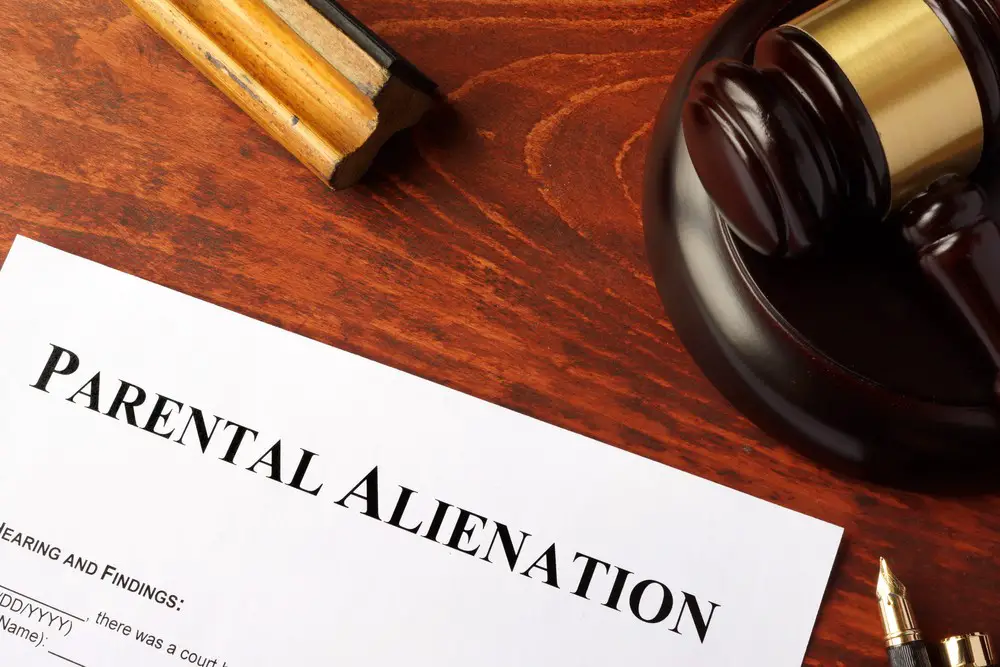As a BetterHelp affiliate, we receive compensation from BetterHelp if you purchase products or services through the links provided
Reunification therapy offers the opportunity for families fractured by divorce or other sources of separation to work towards restoring their relationships. This powerful process bridges gaps between estranged parents and children, allowing them all a chance to mend past hurt while creating new pathways for trust and love. In this blog post, we will look into how reunification therapy is structured and its limitations and discuss potential challenges that could arise during treatment.
Short Summary
- Reunification therapy helps restore parent-child relationships and create a secure family system.
- It incorporates assessments, trust building, communication & conflict resolution to help mend damaged bonds.
- Professional help can reduce stress & strengthen relationships for successful reunification.
Understanding Reunification Therapy

Reunification therapy is a form of counseling that seeks to restore parent-child ties disrupted by estrangement. The critical importance of such sessions cannot be understated, as research has repeatedly demonstrated that children typically benefit emotionally, academically, and socially when both parents are actively involved in their lives. This therapeutic process serves the purpose of helping families reestablish trust with one another while forming healthy attachments between mother/father and child after divorce proceedings or court orders for separation.
When referring to reunification therapy, it must be noted if participation was voluntary or mandated by family courts from events like not attending mandatory meetings about custody issues, etc. Voluntary implementation happens when all members decide to come together outside courtroom borders.
In contrast, court-ordered situations may require accountability for parties split apart due to abusive behavior or simply growing distance among them regardless of where they reside geographically speaking. An important part here is giving enough space according to them, so repairing bridges at a kid’s pace is necessary to regain his/her perception based truthfully once again regarding character traits & behavioral patterns exposed directly through parental figures, primarily those present during initial crisis ruptures faced inside this stage looked over keenly throughout entire event development cycle taking into account external forces frequently used opting instead of friendly approach.
How Reunification Therapy Is Delivered
As noted, reunitement therapy is voluntary and sometimes mandatory. Often reunification counseling efforts will be required in the court for children to be sheltered and to avoid being alienated from the children of the parents if the children are separated. Some are initiated by parents when they feel their relationship dynamics need improvement. Those parents have contacted a Reuniting Therapy, but no attorney or judge is involved with the decision.
Voluntary vs. Court-Ordered Therapy
When a parent-child relationship has been disrupted, reunification therapy may be used to try and repair it. Families who willingly enter into this therapeutic process can do so of their own volition or by recommendation from an authority such as a therapist or counselor, otherwise known as voluntary reunification therapy. Alternatively, court-ordered reunification is required if the family courts decide that safeguarding the child’s best interests necessitates intervention to function safely within their family environment. Initial steps need then be taken towards engaging with mediators in these circumstances. In either case (voluntary/court ordered), both parties are striving toward achieving one goal: finding positive solutions which will lead to an improved state of affairs going forward for all concerned members involved in the parent-child dynamics affected by disruption due during divorce proceedings.
How Relationships Are Disrupted: From Alienation to Justifiable Estrangement
When parents’ and children’s ties are disturbed, abuse is common. The children either get manipulated by their favored parent or physically and emotionally assaulted by their parents, whom they have rejected from. Alienation involves manipulating one parent to portray the other parent so negatively that the child eventually unjustly severs the relationship. In separations and divorces, non-resident parents are often victims. Alienation can occur in virtually every family arrangement.
The Role of Reunification Therapy in Parent-Child Relationships
The relevance of reunification therapy to a parent-child relationship is impossible to underestimate. Studies from the University of London revealed that children with consistent updates on their distant parents exhibited more desirable psychological well-being and educational performance, reflecting how much value even partial relationships can hold.
Reunification therapy assists in developing a robust connection between moms or dads and kids as they traverse the challenging emotional terrain brought about by breakups, lack of faithfulness, and unresolved issues with each other toward healing while strengthening ties among them once again. This procedure will be provided under supervision by an expert therapist who understands what it takes for all parties involved in mending this disruption within their family system.
In some situations where there’s already estrangement between parents/children units, a reunion may serve as a lifeline so both sides begin to repair damage emotionally sustained during strained dynamics.
Components of Reunification Therapy

Reunification therapy is a strategy aimed at fostering healthy family dynamics and attachment. It aims to help clients re-establish relationships through assessments, building trust, improving communication skills, and resolving conflicts in a therapeutic setting. Co-parenting is an important part of this as it enables parents to no longer be together to collaborate for their children’s best interests without letting negative influences affect them emotionally. As such, reunification therapy allows all parties involved to reach successful outcomes that prioritize the psychological needs of these kids.
Assessments and Evaluations

The early stages of reunification therapy are vital to comprehending the particular details and dynamics unique to the family. This includes gathering various documents, such as divorce decrees, psychological evaluations, and custody evaluation reports. There will be individual meetings with each parent involved for a holistic understanding of their experiences can be obtained. The purpose is to pinpoint what issues need addressing so an appropriate plan can materialize regarding mending this relationship between parent-child ties.
This assessment phase serves as scaffolding for all subsequent therapeutic interventions, granting confidence they would indeed target constructive areas properly while providing effective solutions along the way.
Building Trust and Attachment
The primary focus of reunification therapy is to re-establish a strong and meaningful bond between parent and child. It centers around building trust, attachment, understanding, and emotional security, key components for any healthy relationship. To foster this connection, therapists will use activities such as having conversations about their past conflicts or engaging in fun games together that can help strengthen their dynamic with each other.
Creating an environment where parents and children feel comfortable opening up emotionally lays the groundwork necessary for a successful relationship. Growth in their relationship by providing them opportunities towards effective communication over time ultimately allows both parties space enough to solve future arguments without discomfort nor hostility within themselves or towards one another.
Enhancing Communication and Conflict Resolution
Reunification therapy is an important part of repairing and restoring a parent-child relationship. In the integration phase, family members are guided by an experienced therapist to use proper communication techniques and conflict-resolution strategies to help build long-lasting connections with each other. Through these methods, everyone can work together towards strengthening their bond to achieve reunification success for all parties involved. Parents and children must understand how vital it is to learn healthy ways of communicating with one another as this ultimately contributes significantly towards maintaining strong relationships between them now & into the future.
The Reunification Process: Stages and Techniques

The parent-child relationship needs to be treated in three separate stages during reunification. This includes assessing the situation first, forming a commitment, following treatment protocols, and integrating them for success. Challenges can arise along this path of reuniting families that must be considered, such as rejection from either side or any issues surrounding confidentiality which may require a reassessment of plans if it is not suitable for all involved parties.
For successful reconnection between parents and their children, it’s important to recognize potential obstacles beforehand so that everyone receives necessary support on their journey back towards each other while keeping sensitivity regarding individual family circumstances when selecting what approaches are used by counselors throughout therapy sessions needed for settling emotional matters among both sides.
It should always remain clear though there will no two same cases where familiarity lies within listening actively but also adapting strategies fit best due to personal experiences being encountered since beginning till finding peace after long recovery period linked directly with healing bond built over time again gradually thanks hard work provided by entire team focused entirely upon restoring trusted healthy relationships between generations relying constantly upon common goal shown nowadays growingly effective even under demanding conditions awaiting positive results turning into reality ultimately strong reinforcing reunited happily looking forward brighter future expecting strengthened mother-father figure Child bonds lastingly providing complete round balanced happy permanent care guarantee stabilizing transitioning its set result form fully mature ParentChildrelationships outcomes served wholeheartedly delight forevermore eventually achieved completing satisfactory reunion project effortless joy goals perfectly desired lifetimes now come true bettering lives reaching unbeatable strength.
Initial Assessment
The initial evaluation is essential to reunification therapy and forms the basis for all therapy. Therapeutic efforts. Information about each family member, the dynamics between them, and any troubles leading to a break in their parent-child relationship are collected, from which a better understanding of the particular situation can be developed. This allows for more tailored strategies that may need to be implemented throughout this process, with special consideration for mending such important relationships.
The insight gained through this preliminary assessment helps guide appropriate plans while keeping aware of possible hurdles one might encounter along this journey into reconnecting families again, hence stressing its importance greatly when beginning these sessions.
Treatment and Commitment
The treatment and dedication phase in reunification therapy aims to strengthen the bond between parent and child, thereby assisting with healing. Both parents and children must give their full commitment for this form of therapy to be effective. The favored parent is also important in helping rebuild a damaged parental link. They must recognize the process of reconnecting as well as successful co-parenting practices.
For lasting reunion results, therapists urge both parties to collaborate while staying committed throughout all stages. If everyone puts effort into rebuilding that parental relationship, it could bring about meaningful progress within families who have experienced separation issues.
Integration and Long-Term Success
For a successful reunification, integration is essential. An experienced therapist plays an important role here as they can pick up on subtle behaviors that the family members might be unaware of. Working with parents and children to resolve issues arising from divorce or separation, this process ensures it’s advantageous for everyone involved in reunion therapy.
Reunification treatment may not fit every case since there could be instances involving abuse or neglect. This would not work best if the child doesn’t appear mentally or physically ready. Contemplating each unique situation carefully, along with professionals’ advice, is vital when deciding which option fits better for every family member involved.
Challenges and Limitations of Reunification Therapy

Reunification therapy can be extremely beneficial but has its difficulties to consider. Resistance from both the child and parent is a major obstacle, so it’s important to understand what drives this resistance for them both to benefit from the process. Also, confidentiality must be considered; informing those involved on where limits lie before beginning reunification may help maintain privacy throughout the journey.
For all these potential challenges, providing support and guidance during activities that build communication between parties will encourage progress toward successful reconciliation between child and parent alike.
Resistance from Children or Parents
Regarding reunification therapy, resistance from parents or children can significantly impede its success. Reasons behind such opposition could include the child feeling scared, angry, and devoted to their favored parent. Meanwhile, parental reluctance may be due to shame, guilt sensations, or a conviction that the treatment is unneeded. This type of dissent often creates an atmosphere without trust between the guardian and the young one, consequently making matters worse for both parties.
To tackle this challenge in many cases, therapists must discover what caused these reservations before they deal with them by providing assistance as well as guidance to each party – parenting side and kid’s standpoint – assisting mutual understanding through activities promoting credibility along with open communication wherein every voice counts allowing successful rejoining after all issues are addressed at length.
Confidentiality Concerns
Reunification therapy can cause confidentiality worries for the family members participating since their progress must be reported to a court. For this reason, everyone must be aware of the established policies and procedures regarding security, with any reservations raised being openly discussed before starting treatment. Maintaining privacy throughout is essential if reconciliation efforts are going to work. Thus creating an atmosphere where people feel safe sharing their feelings and experiences allows for more successful reunification. By understanding boundaries regarding confidential matters within session time frames and communicating these topics clearly amongst all involved parties, families can form a supportive environment that will lead them towards success in achieving joint healing goals together.
Cases Where Reunification May Not Be Appropriate
When attempting reunification therapy, it is essential to consider the family’s unique situation and seek advice from a trained specialist. Past abuse or neglect could indicate that this course of action may not be suitable similarly if a child is not emotionally stable or physically ready for such steps. Reunification should never fit everyone equally by weighing up all relevant circumstances with professional help; families can decide together which direction will work best. Remembering that qualified therapist input is invaluable during these times helps ensure informed decisions are made about their particular case.
Seeking Professional Help for Reunification
When it comes to reunification therapy, professional assistance is necessary. Experts in the field, such as social workers, attorneys, counselors, and court officers, should be involved to support all family members going through this process. If not, involving courts as the first step is preferred. One must search for a therapist with enough skill sets, like sensitivity and tactfulness, required during the counseling session regarding reunification protocol.
Expert help eases strain among parents-children relationships and provides tactics for repairing any disparities that arise between them leading up to reintegration activity. Thus enabling healthy communication channels is needed to heal those pains existing within these relationships.
The Role of Mediators, Therapists, and Legal Professionals
Reunification of families, including all parties and children involved, is greatly aided by mediators, therapists, and legal professionals. They provide guidance on any potential problems that might occur throughout the reunification process and give insight into what rights are afforded to each party regarding court orders or custody arrangements. These experts offer expertise for a successful outcome for those taking part. Ensuring it is beneficial while also allowing healing within the family unit. Working closely together can guarantee things go smoothly so everyone benefits from the reunion efforts underway.
BetterHelp’s Online Reunification Counseling

BetterHelp’s reunification counseling offers easy and easily accessible family therapy. The aim is to bring together a parent-child relationship, bolstering their bond and refining communication patterns. To heal any hurts that have taken place within their relationship.
Components of online reunification counseling include evaluations and assessments for trust building/attachment improvement and communications training meant for conflict resolution purposes. Despite potential issues such as resistance from either side or confidentiality worries, BetterHelp still provides families seeking reunion with helpful resources to successfully re-establish relationships.
Summary
Reunification therapy allows families to foster healing and help repair the parent-child relationships affected by divorce or separation. By understanding its components, stages, and techniques (as well as seeking professional aid when needed), this powerful process can encourage family members to reconnect more healthily. Although obstacles are often present throughout the path toward reunification, having proper support helps them navigate these challenges while working toward a brighter future together.
Frequently Asked Questions
What are the goals of reunification therapy?
Reunification therapy aims to help re-establish and strengthen the bond between an alienated child and a separated or detached parent. A therapist works with the family to construct more meaningful connections and develop an atmosphere where both parties can begin reconnecting.
The core mission revolves around bringing back togetherness for parents and children alike.
What are the strategies for reunification?
Reuniting families successfully involves engaging with them, equipping parents with knowledge, and connecting them to appropriate community services. Regular visits among family members must be maintained frequently as part of this process. These steps are key when it comes to reunifying separated families effectively.
What are the five major components of helping families prepare for reunification?
Reuniting families requires careful planning, and there are five essential components to bear in mind: establishing trust with the family, formulating a reunification plan that takes safety into account, offering emotional support throughout the process, and keeping communication lines open at all times.
Together these steps can ensure the successful reunion of loved ones.
What does family reunification process mean?
Family reunification entails offering relatives the chance to join a family member already living in that specific country. This gives families an opportunity for better support systems, allowing them to be together again and take advantage of new possibilities.
It is. Used as a form of charity, giving those who have been parted from their loved ones due to displacement or other situations another chance to reunite with their family members.
- Breaking the Silence: Why Men’s Mental Health Matters More Than Ever - April 15, 2025
- How to Transform a Home’s Patio Space into a Relaxing Space - March 23, 2025
- 5 Strategies to Use a Cell Phone to Help Manage Your Stress - March 23, 2025
This site contains affiliate links to products. We will receive a commission for purchases made through these links.



